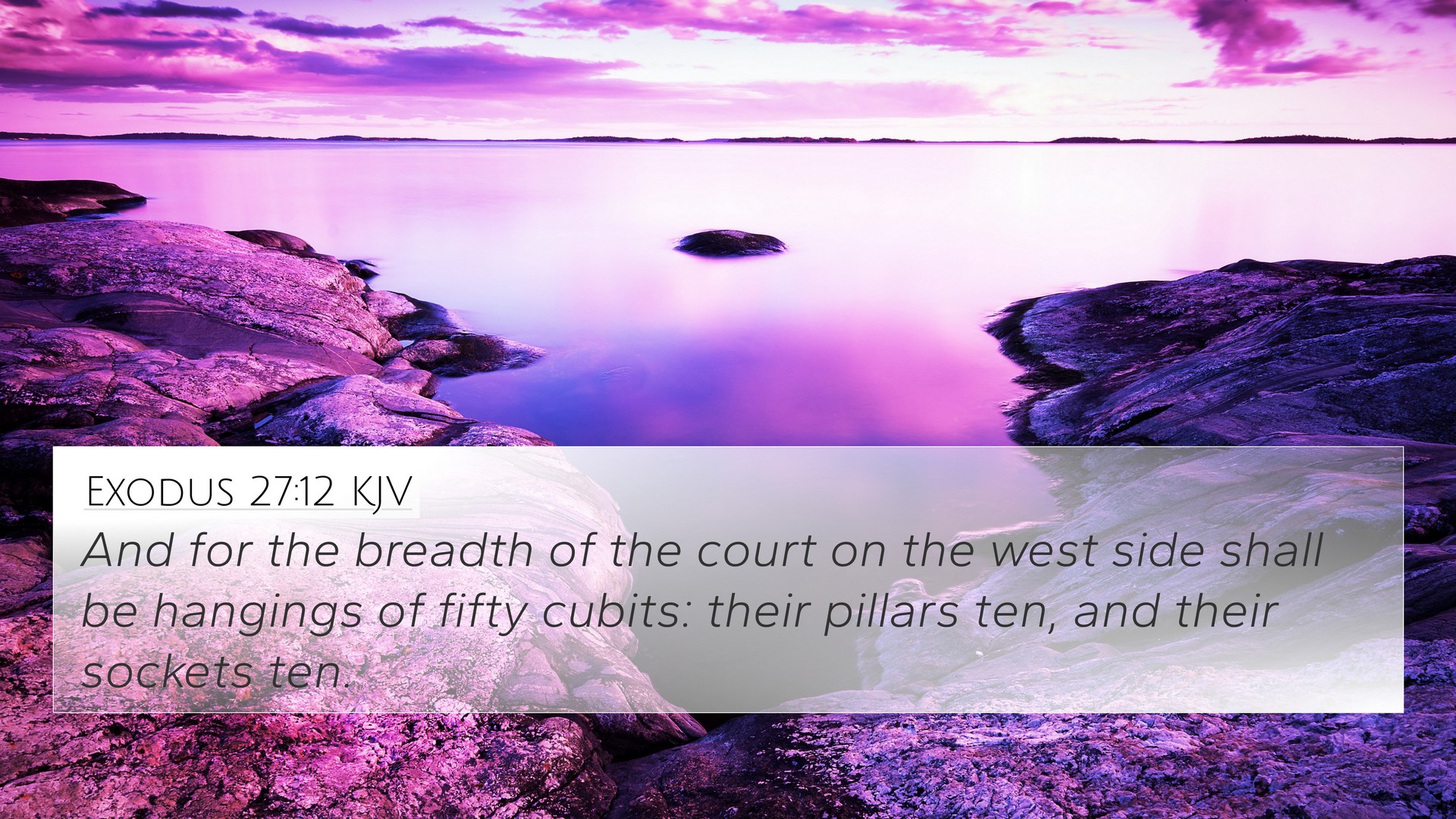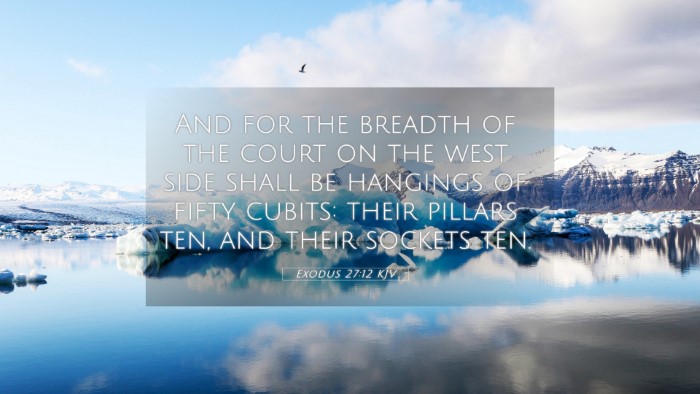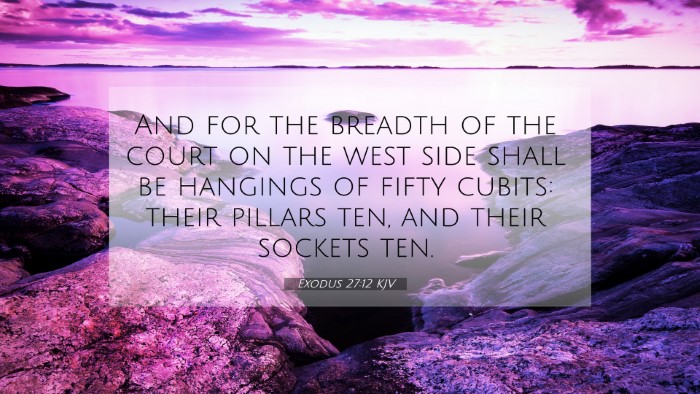Understanding Exodus 27:12
Exodus 27:12 states: "And for the breadth of the court shall be an hundred cubits, and for the length of the court twenty cubits: and the height shall be five cubits of fine twined linen, and their sockets of brass." This verse is a part of God's detailed instructions to Moses regarding the construction of the Tabernacle and its surroundings.
Verse Context and Meaning
The context of this verse is crucial for understanding its full meaning. Here, God is describing the dimensions and materials of the outer court of the Tabernacle. This section serves not just a functional purpose but also a symbolic one, as it set the stage for the worship and communion between God and His people.
Insights from Public Domain Commentaries
-
Matthew Henry's Commentary:
Henry emphasizes the significance of divine instructions in the construction of the Tabernacle. Each measurement and material was divinely ordained, reflecting God's holiness and the need for His people to approach Him in reverence. The outer court, being a space of gathering, represents the initial step toward entering God's presence.
-
Albert Barnes' Notes:
Barnes elaborates on the dimensions mentioned, noting that the outer court was designed not only for the priests but also for the people to assemble. It symbolized the separation between the holy and the common, indicating that although the people were welcome to worship, there were still boundaries established by God.
-
Adam Clarke's Commentary:
Clarke provides insight into the materials mentioned in this verse, particularly the “fine twined linen” and “sockets of brass,” which represent purity and strength. The linen suggests a glorious and clean appearance, while brass signifies durability, aligning with the nature of God as eternal and unwavering.
Thematic Connections
This verse connects thematically with several Bible verses that discuss God's dwelling among His people and the holiness of worship. Here are some pertinent Bible verse cross-references:
- Hebrews 9:1-5: Discusses the sacred elements and structure of the tabernacle.
- Exodus 25:8: “And let them make me a sanctuary; that I may dwell among them.” This verse establishes the purpose of the tabernacle itself.
- Acts 7:44: Refers to the tabernacle as a testimony of God’s presence among His people.
- 1 Corinthians 3:16: “Know ye not that ye are the temple of God, and that the Spirit of God dwells in you?” highlighting the transition from physical to spiritual dwelling.
- Psalm 27:4: A desire to dwell in the house of the Lord all the days of one's life, reflecting worship's importance.
- Ephesians 2:19-22: Discusses believers as part of God’s house, linking the Old Testament tabernacle with the church today.
- Revelation 21:3: The ultimate dwelling of God with humanity in the New Jerusalem, tying the theme of God's presence throughout the Bible.
Inter-Biblical Dialogue
The connections and linking Bible scriptures found in Exodus 27:12 not only unify the Old and New Testaments but also create a dialogue about God’s relationship with humanity across scripture. Each text reflects God's continuous desire to dwell among His people and illustrates the holiness required in approaching Him.
Tools for Bible Cross-Referencing
Utilizing a Bible concordance or a cross-reference Bible study guide can greatly assist in exploring the profound relationships between verses. Some effective methods include:
- Utilizing online Bible search tools to find related scriptures.
- Employing topical study Bibles that highlight cross-references by theme.
- Participating in study groups that encourage discussion on biblical connections.
Conclusion
Exodus 27:12 stands as a significant pointer to understanding the broader themes of God's desire for a relationship with humanity and the holiness demanded in that relationship. By examining this verse through the lenses of public domain commentaries and cross-referencing related scriptures, we gain richer insights into the Scriptures as a cohesive narrative of God’s presence among His people.


